The Upper House, Hong Kong’s most luxurious hotel! Video review of our 5 star suite.
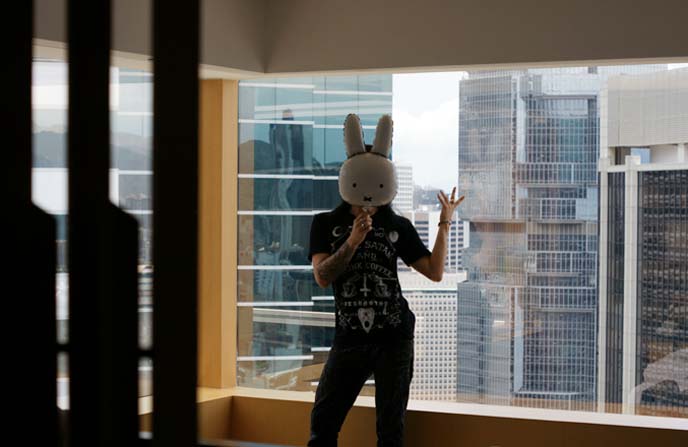
One of the perks of travel writing: you get to stay in a lot of nice hotels. At this point, it takes a lot to knock my fishnets off.
But Hong Kong’s modern luxury hotel, The Upper House, left me speechless. I can’t stop thinking about the Zen interior design, and attention to “guest experience” that goes far beyond 5-stars.
And boy did we have fun, partying in our mega-suite overlooking the harbor! We hope you smile at our video about the Upper House, and Miffy-madness below.
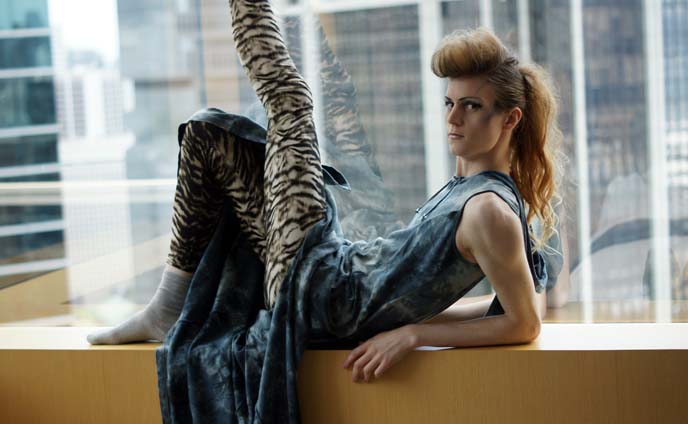
The seamless service began as soon as Yukiro and I arrived at Hong Kong Airport. A driver welcomed us with a “La Carmina” sign, and drove us straight to the Upper House hotel in a luxury black car. Instead of having to wait in a check-in line, our “Guest Experience Manager” immediately took us up to our upgraded suite on the 41st floor. After he gave us a tour, we fell over on the floor, dazed by the unpretentious yet majestic treatment we had received!
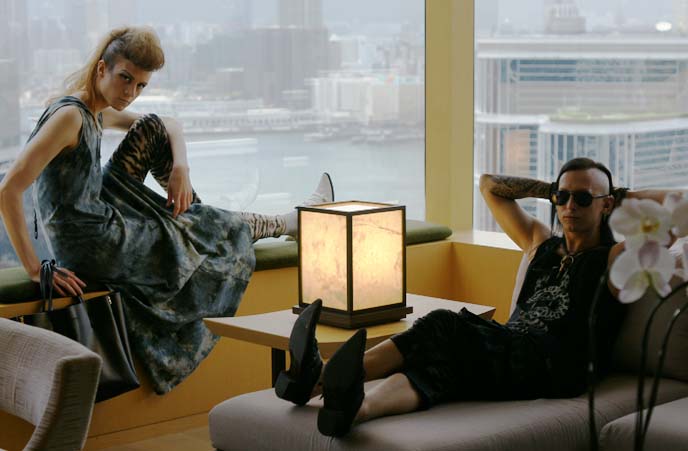
Death rang the doorbell (aka John Skeleton). Outside, Hong Kong is humid, aggressive and stifling. But here, we felt like we were floating in a Zen cloud, far above the madness.
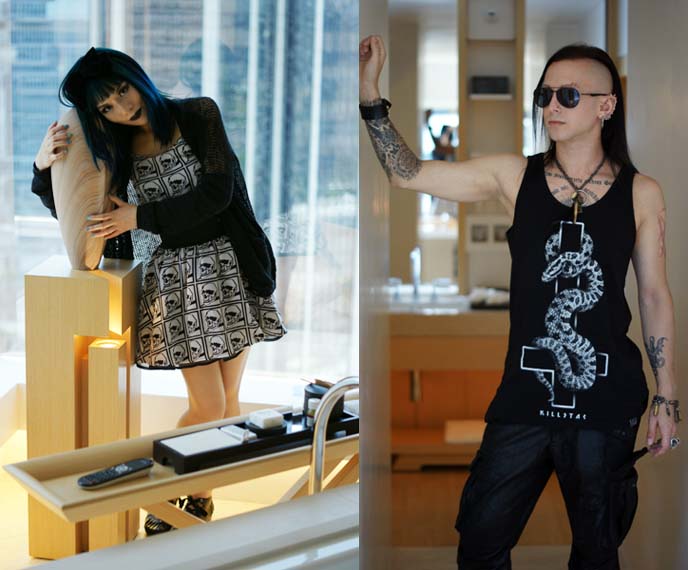
The bathroom is as large as an apartment in Japan (400 sq ft), and stocked with every amenity imaginable. Tweezers? Check. Eye cream? Check. The star of the show is the limestone free-standing bathtub, fronted by a curved, abstract sculpture made of sandstone.
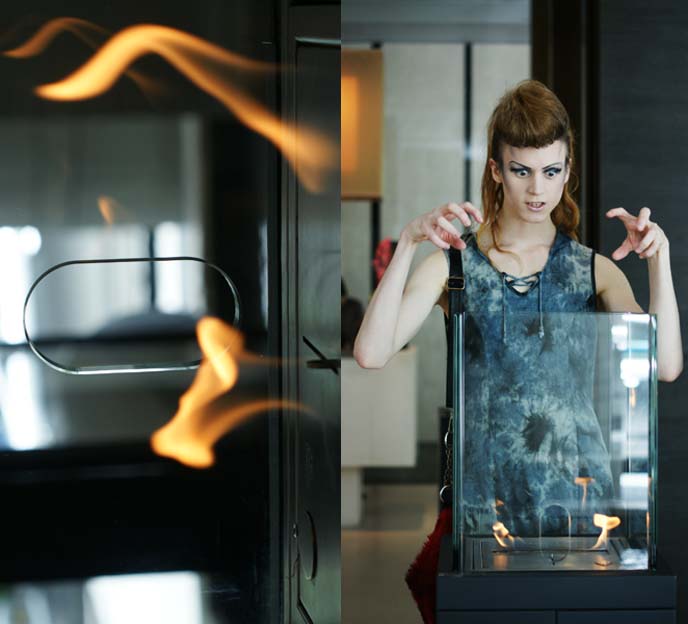
The Upper House is located at Pacific Place in Admiralty — an ideal location, only a few stops from Central and Causeway Bay. The staff knows every guest by name, and greeted us as we entered and exited. Yukiro was easy to remember, with his rockabilly hair and fiery disposition!
We were so inspired by our heavenly suite that we made a video about it. Watch our funny Upper House shenanigans above and on YouTube. (And check out more of my travel videos here.)
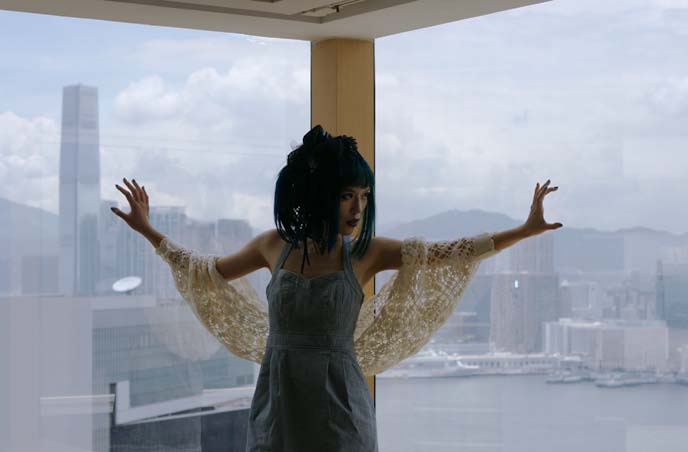
An epic view requires an epic pose. My dress is a present from Nanette Lepore: it’s this exact Runaway Stripe design, which is great for traveling since it can be dressed up or down. The crochet top is by Liz Lisa.
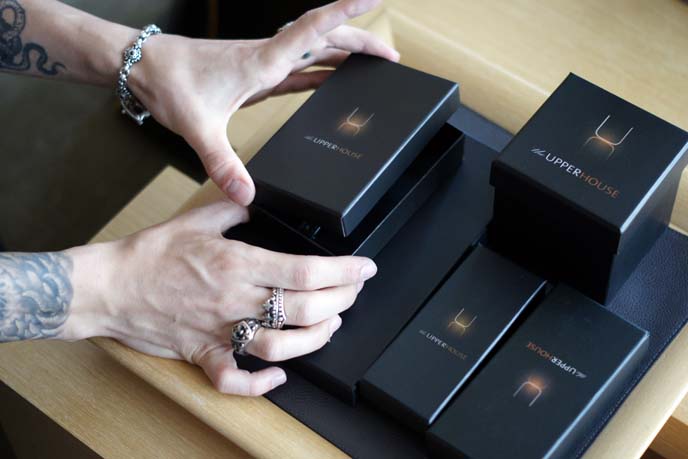
The Upper House staff goes out of its way to make guests blissfully happy, and left these thoughtful gifts in our room. During our room orientation, Yukiro mentioned that he wanted to buy Chinese tea. The next day, there was a complimentary tea box in the room, along with a handwritten note!
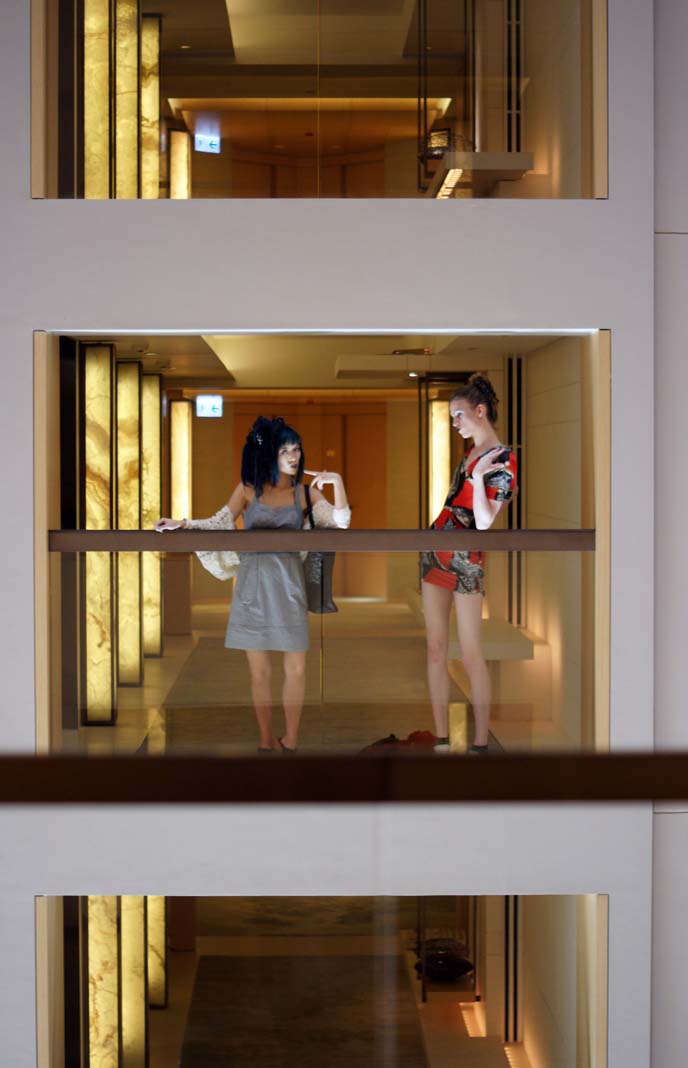
The Upper House is under the Swire Hotels umbrella, and designed by young architect Andre Fu. He received international accolades for his work here, and deservedly so.
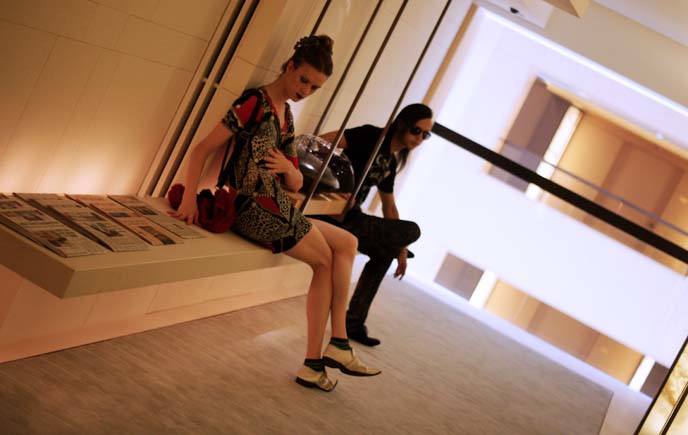
At first glance, the interiors are minimal. However, the longer you stay here, the more you’ll notice subtle elements that convey a warm and peaceful feeling. Such as symmetry, rounded shapes, and natural materials (ceramics, wood, sandstone).
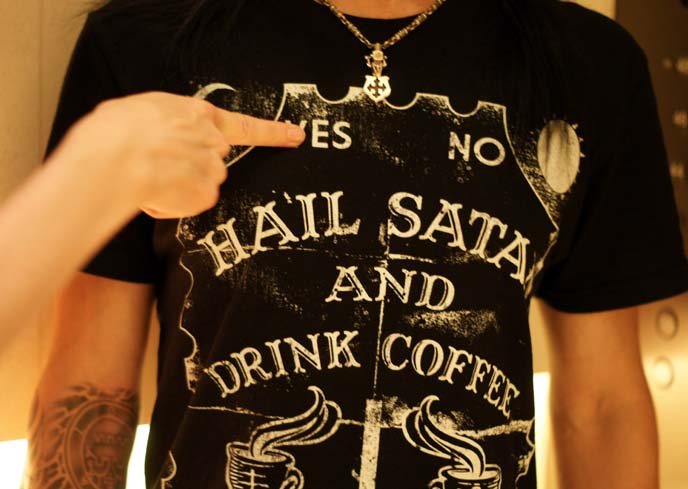
Case in point: the elevator has no “Close” button, to encourage guest to slow down and breathe. Yukiro decided to push “Yes” on Death’s t-shirt instead.
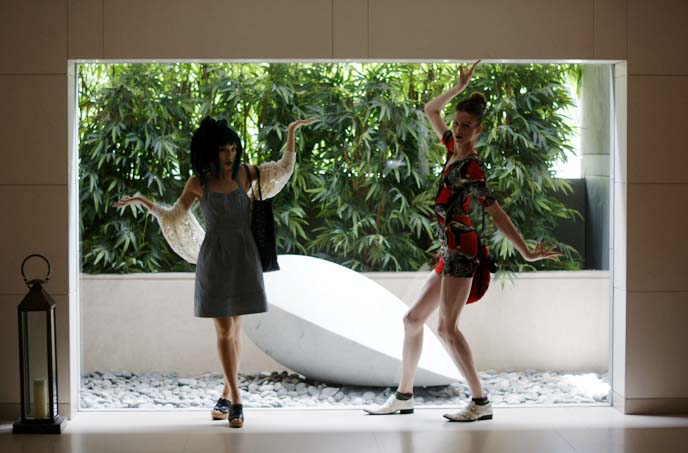
The 6th floor has a secret garden with a grassy lawn. Guests can relax and join yoga classes in this oasis.
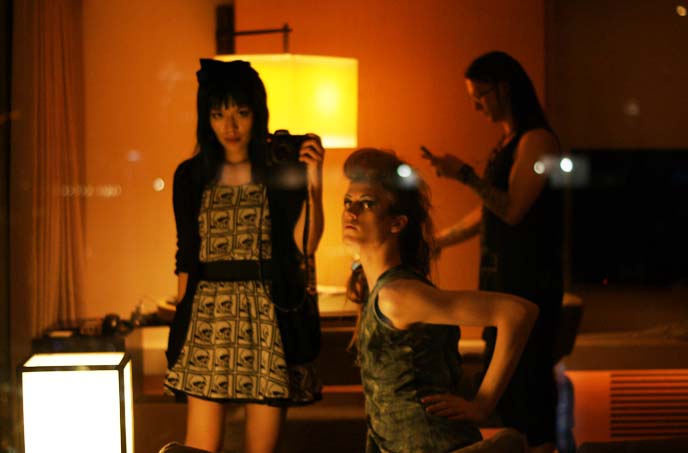
We couldn’t keep our 1230 square foot Upper Suite to ourselves. So we invited over a few friends…
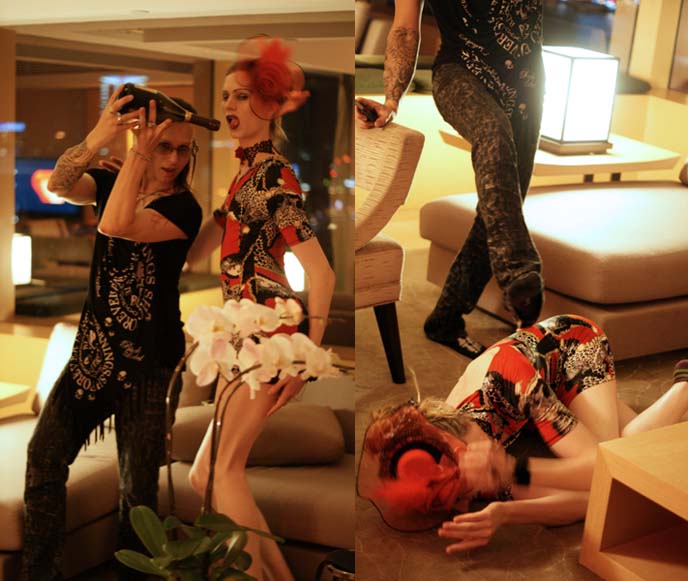
Once again, an example of the glorious guest service: the manager heard we were having a get-together, so he sent up a bottle of champagne!
Have you noticed that at my parties, someone always ends up on the floor, getting kicked?
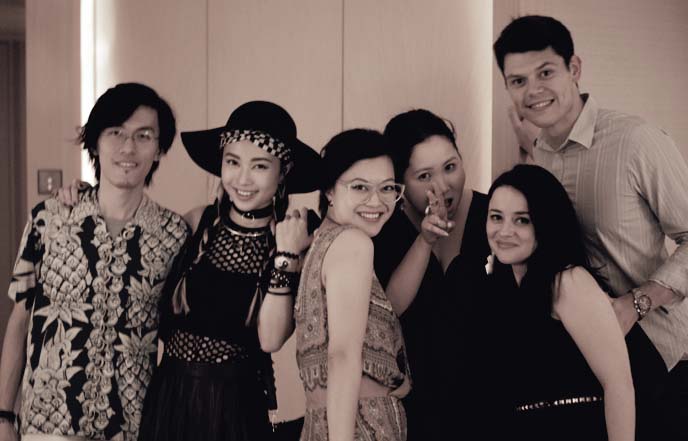
Soon, we had a fabulous mix of fashion bloggers, designers, models, photographers, illustrators, Instagram stars…
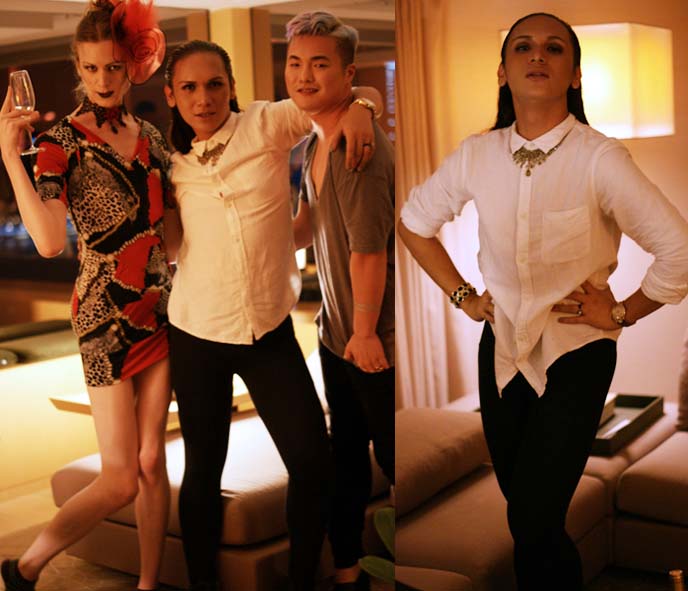
Hong Kong doesn’t really have an underground or alternative clubbing scene. The best parties tend to be private get-togethers, like ours.
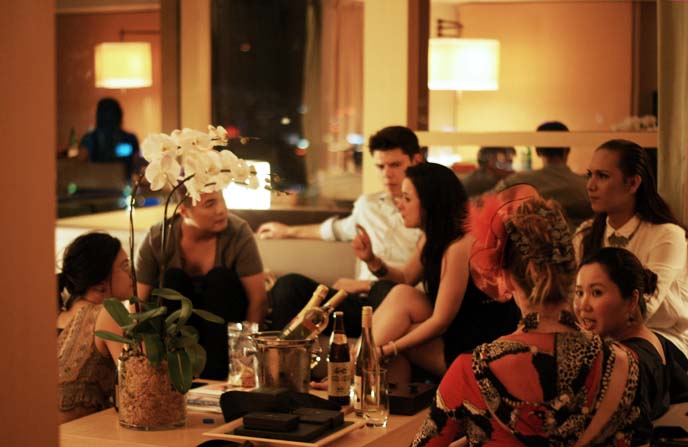
Everyone enjoyed relaxing on the bespoke furniture. Each room has an iPod touch and stereo set-up, so Death plugged in and DJ-ed.
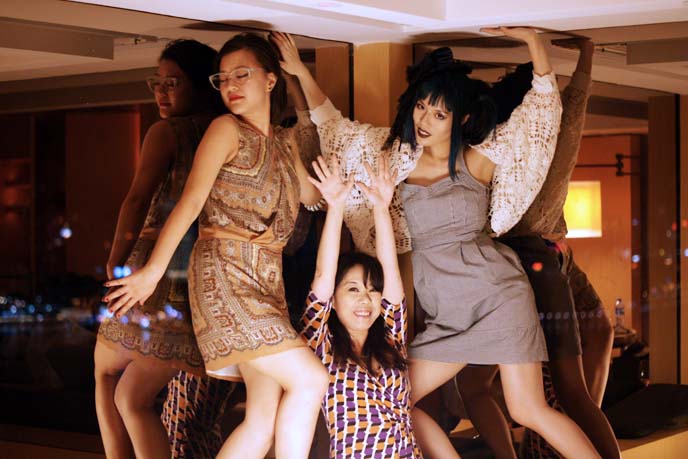
Erm… things got a bit crazy…
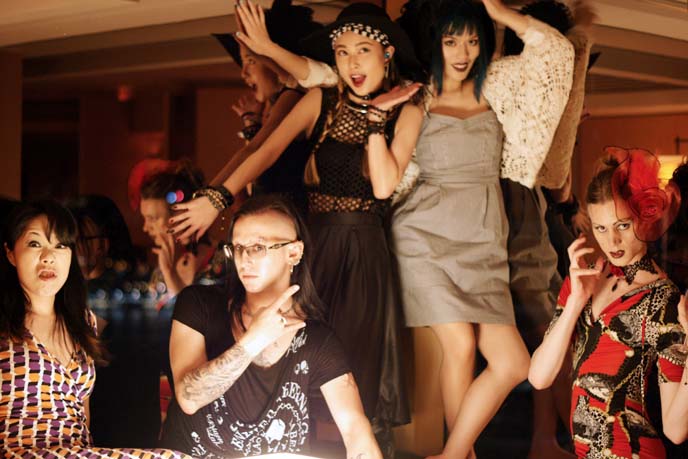
How spooky, the far left face! Our guests ate up everything in the complimentary Maxi Bar: free coconut water, juices, beer, sweets, cookies.
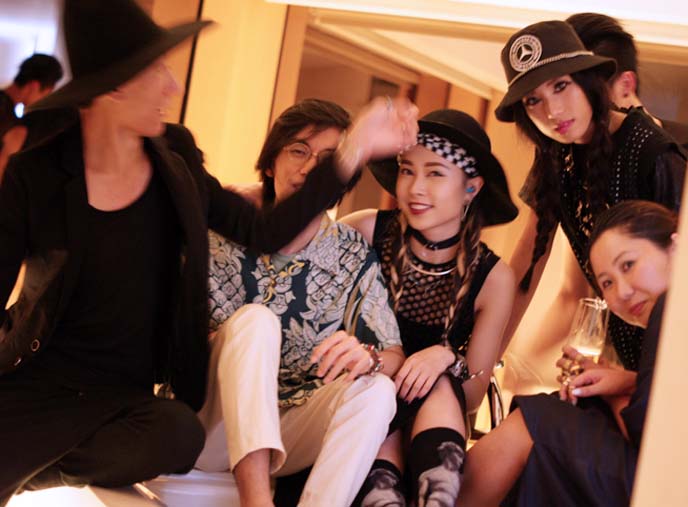
We put the big bathtub to good use. I think we fit about 10 people in there!
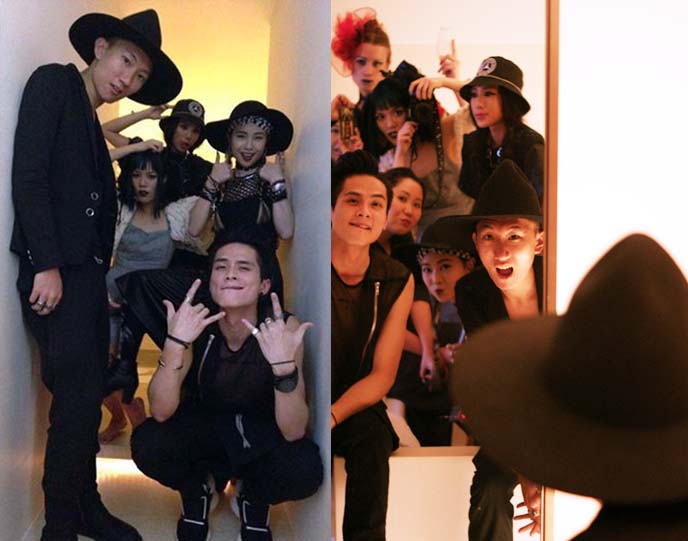
The lighting and design make the Upper House an ideal place for Instagramming.
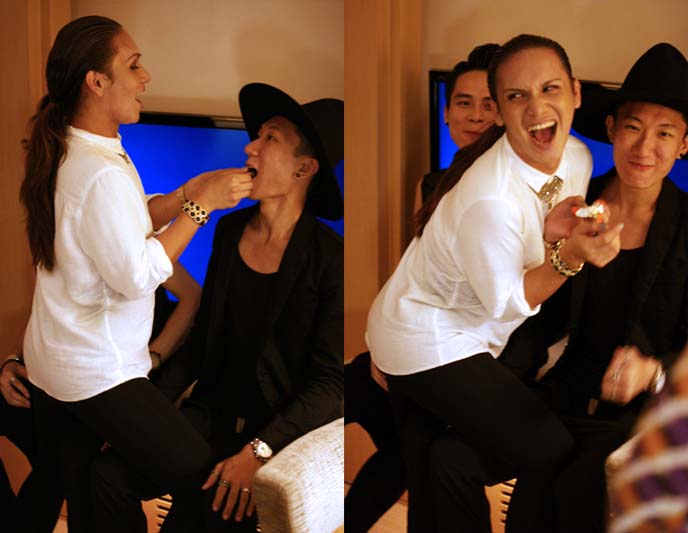
Want to see our Italo Disco dancing and shenanigans? Check out our silly video.
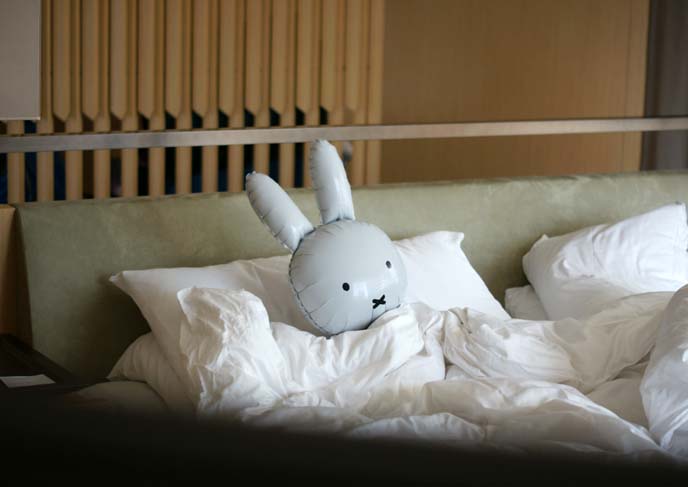
The next day, we discovered Miffy in the comfy bed. She refused to move from the 400 thread count linen.
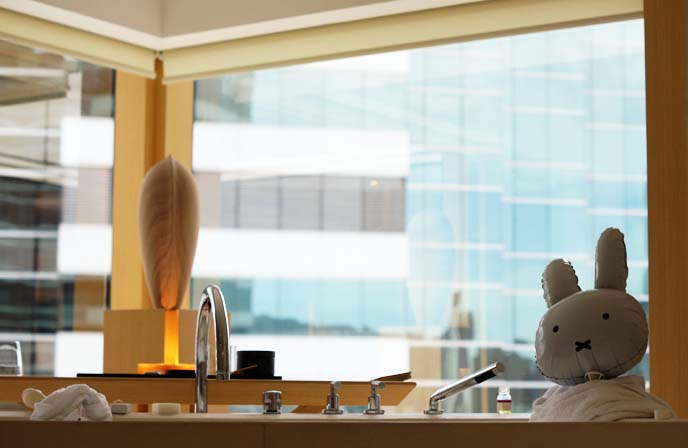
She worked off her hangover by taking a bath, while gazing at the skyline view.
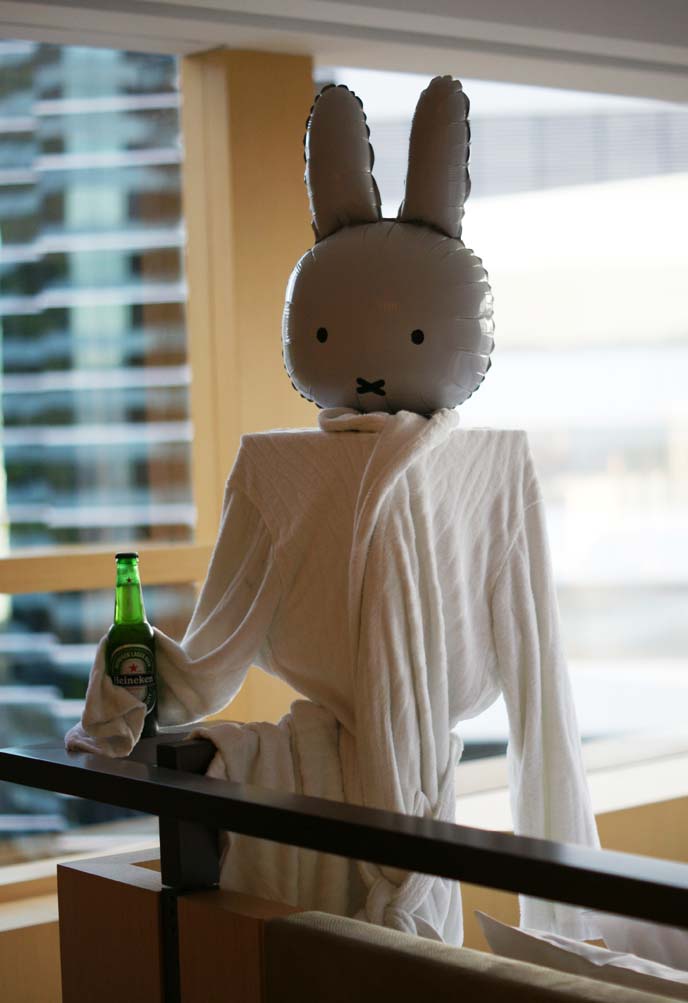
Oh Miffeh… that’s enough beer for you! And don’t try to leave with that robe!
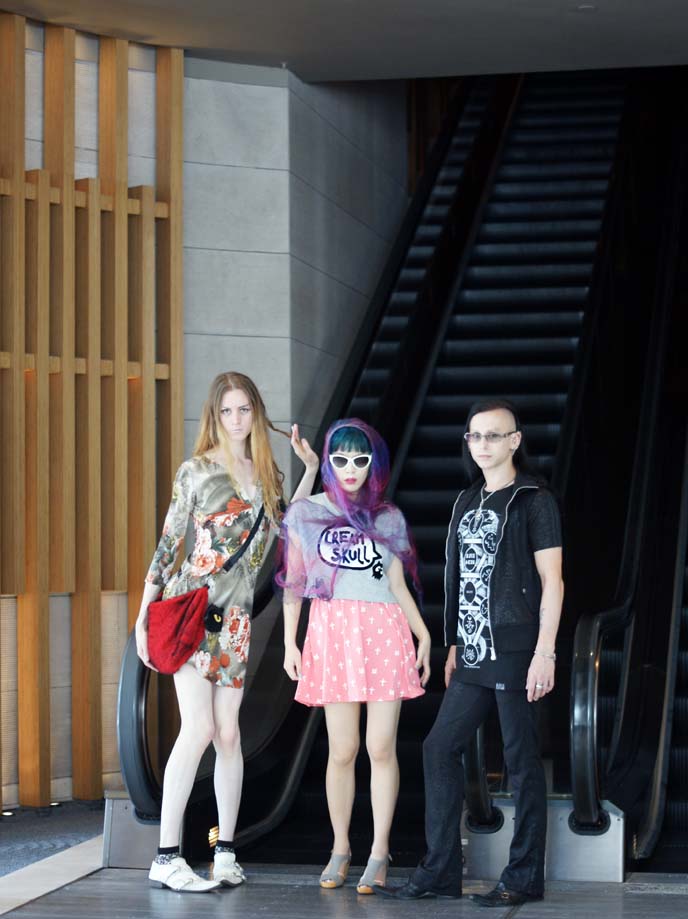
One of my favorite parts of the Upper House was this dark entry tunnel. As guests ascend, they enter into a serene mindset, leaving behind the bustle and noise of the city.
My Cream Skull top and pink dress with Goth crosses are from Hyoma, Izzue / I.T store.
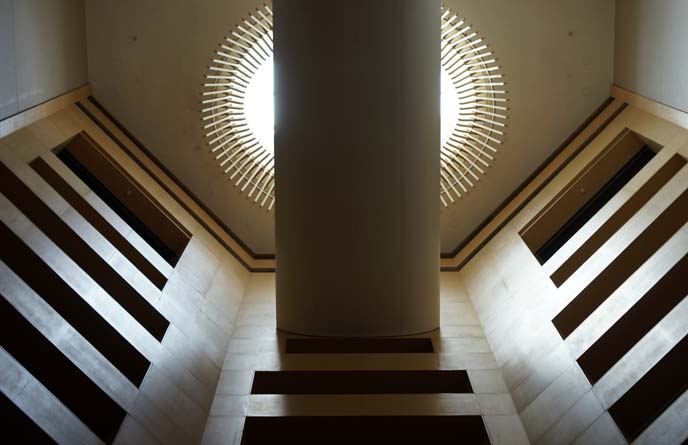
Andre Fu designed the space to feel like a private residence, hence the absence of a check-in counter and other typical “hotel” elements. Tranquility is the key here…
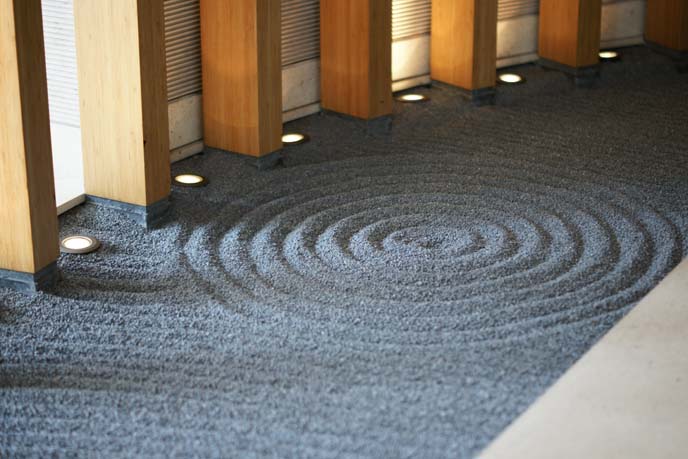
… communicated thorugh subtle design elements. We didn’t notice this Zen sand arrangement by the escalators until a few days later.

A peaceful pool, to encourage reflection.
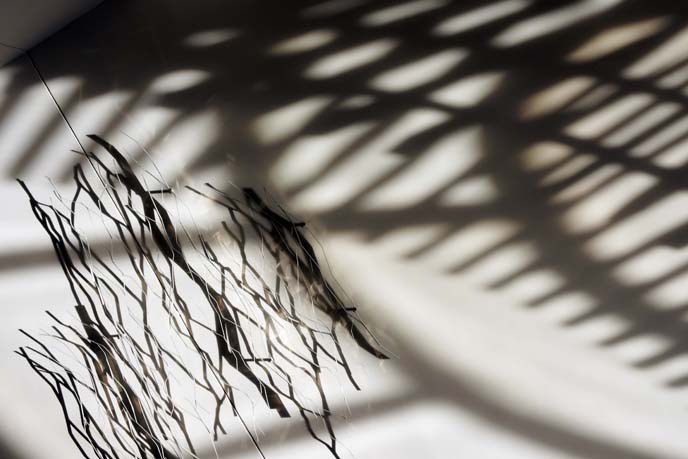
I particularly loved the choice of contemporary art. Light and shadow near the restaurant, a “cocoon” in the elevator, all integrated naturally into the design.
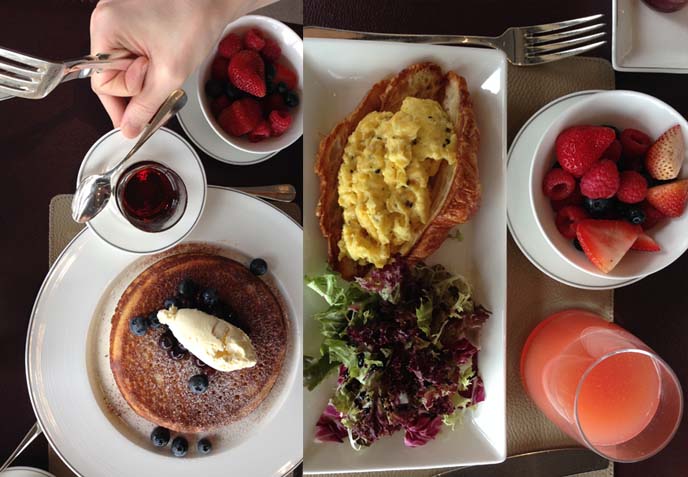
I’m still thinking of my breakfast at Cafe Gray Deluxe. Yukiro enjoyed berry pancakes with creme fraiche, while I had truffled eggs on a croissant. Everything is made fresh to order.
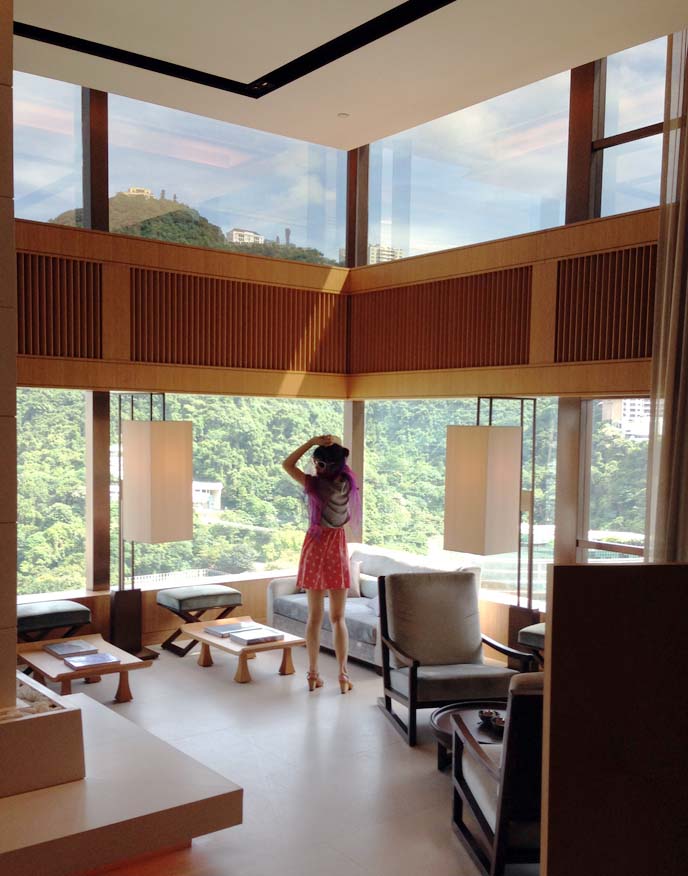
I wish I could have spent more time on the 49th floor Sky Lounge, which has a fireplace, snacks, and reading materials. How about this view of Wan Chai and the Peak?
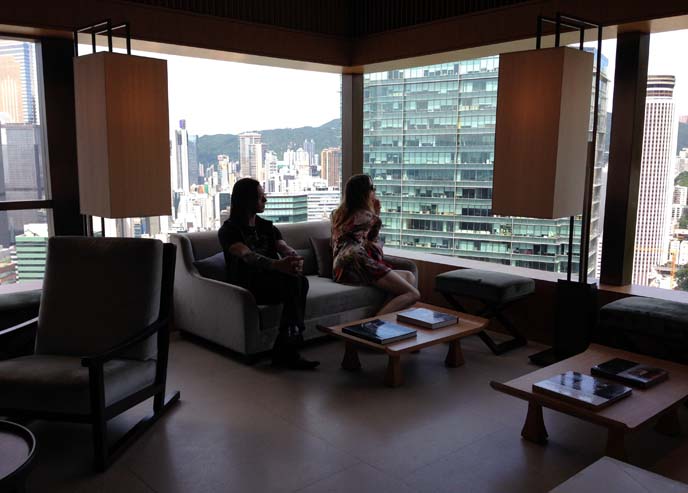
This photo says it all: we didn’t want to leave the Upper House Hotel! The most basic rooms are $700 US a night, but the numerous perks and attentive service make it worth the value. The staff cares about your experience, and doesn’t nickle-and-dime you for extras. For a special occasion, this is a splurge that is truly memorable. At the very least, come for dinner with a view, at Cafe Gray Deluxe restaurant (we reviewed it in this post.)
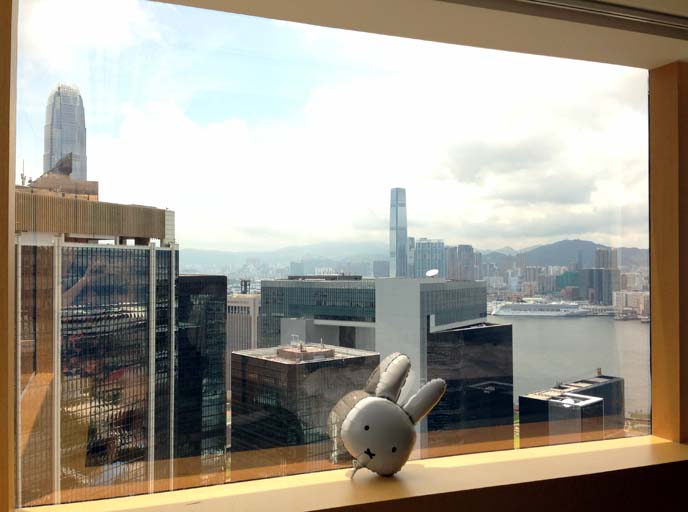
Thanks to the Upper House for this unforgettable stay. I felt rejuvenated, and renewed my appreciation for my friends and Hong Kong. It does’t get better than that.
PS: Don’t forget to watch our funny video about how we enjoyed our suite!
SHARE & COMMENT
Cape Town colorful murals, street art & Woodstock Exchange. Off to Shanghai, Cebu, HK!
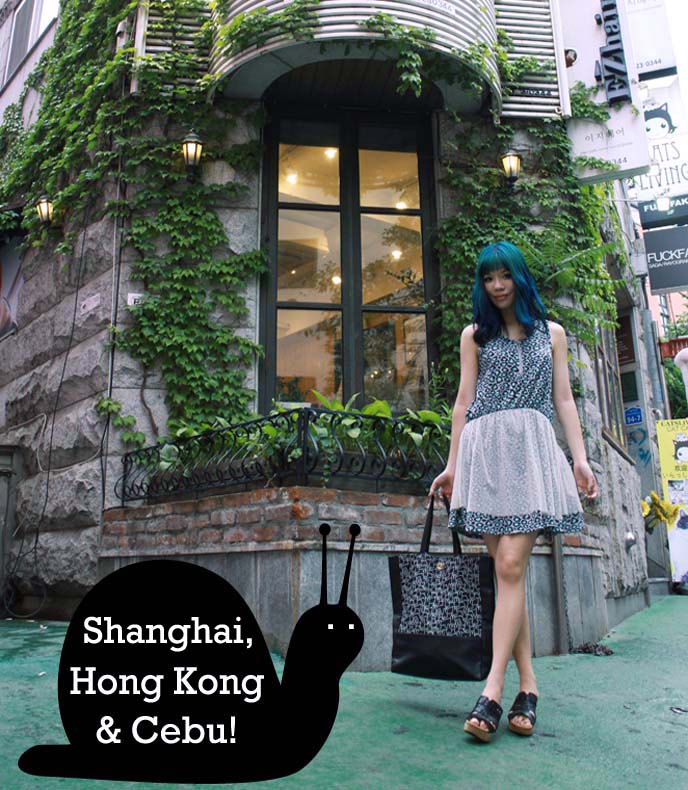
Life has not been crawling at a snail’s pace lately: I’ve been overwhelmed with dream jobs and trips this year. Bear with me, as I put together coverage from my trips to Africa and Asia. In this post, I’ll give you a tour of Cape Town’s colorful art in the Woodstock district.
But first, announcing my next destinations. I’m going back to Hong Kong, and for the first time, I’ll be in Cebu and Shanghai! I’m working on a number of travel projects, including a partnership with a new hotel group. I’m also doing a major network TV shoot in Hong Kong, appearing on-camera as host and also arranging the production.
Finally, whenever my filmmakers and I have a moment to breathe, we’ll capture stories about Asia subcultures for you. If you have tips for places to visit, especially in Shanghai and Cebu, please leave me a comment. (Above, I’m in front of the Cat’s Living cat cafe in Hongdae, Seoul.)

Now, let’s flash-back to my first time in Africa. Archbishop Desmond Tutu described post-apartheid South Africa as a “Rainbow Nation.” His words describe Cape Town’s Woodstock district particularly well. This neighborhood has developed from an inner-city slum into a colorful art haven. Locals live next to design studios, and in homes decorated by international artists.

Juma Mkwela took my team and me on a Woodstock art walking tour. He came to South Africa from Zimbabwe, and was a victim of the 2008 xenophobic attacks. Juma turned this tragedy into an impetus for change: he now uses art to educate children, and inspire social development in disadvantaged areas.

Not long ago, Woodstock was run-down with crime and drugs. In 2011, a local artist called Freddy Sam launched a revival project, aiming to bring pride and color back into the community. Today, Woodstock is a trendy hub with homes painted by dozens of international artists, mainly with messages of peace and love.

Using giant walls and buildings as canvases, these artists — coming from countries like Canada, UK, and China — created art in a mix of creative styles. We spotted what looks like an evil Bart Simpson. (Photography by Melissa Rundle, Eric Bergemann and La Carmina.)

Many paid tribute to Africa, by depicting animals such as the ones we saw at Aquila Safari. An elephant eye stares out from this wall.

Pets are a popular motif. This dog painting integrates with the existing materials of exposed brick and cracked walls.
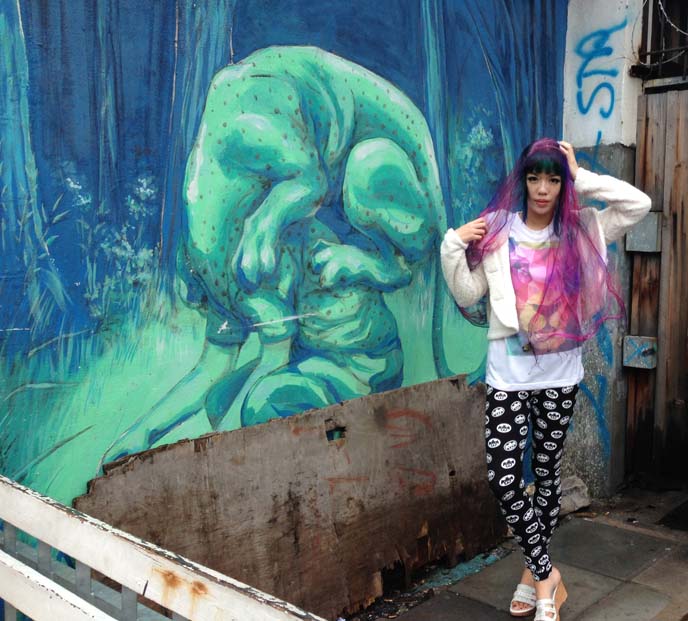
Some of the works are provocative. Argentinian artist JAZ made this “Not Eating” urban mural, showing a big cat devouring a man’s head.

Here’s another version by JAZ, with colors that match the rust of the pole in front. Juma told us that these murals revitalized the area, and created a sense of pride in the community.
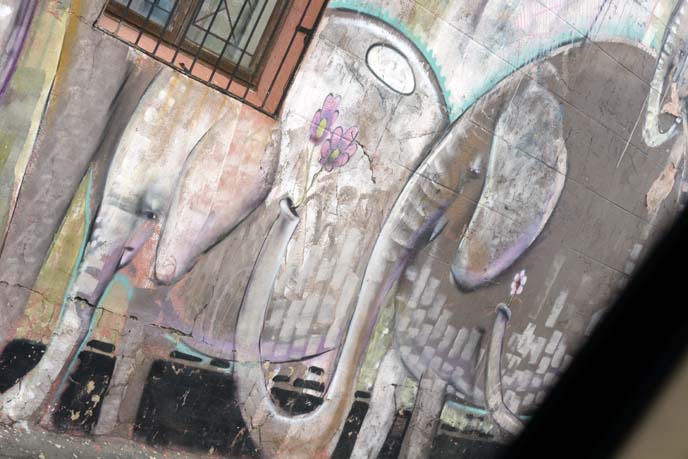
The artists get permission to paint the walls, and work with residents to create a design. Many incorporate portraits of the homeowners, or elements that reflect their personalities. I suppose I’d live in this Victorian home with cute pastel elephants on the front.

Apartheid only ended in 1994, and locals still remember how it loomed over their lives. In the spirit of Nelson Mandela, many chose to paint messages of tolerance. One of my favorites is this “One Heart, One Love” mural by Boamistura, a group of five Madrid artists.
I’m dressed rather internationally: a rainbow lion t-shirt from Chatuchak Market in Bangkok, leggings from Hong Kong’s Izzue, a fuzzy jacket from Peace Now Japan, and a scarf from San Francisco’s Chinatown.

The “most fabulous” award goes to New York’s Cern, who made this purple marvel starring the homeowner’s deceased white cat. I like how he used the curve of the gate to make an elephant’s forehead and trunk.

Juma walked with us all around Woodstock, pointing out hidden works and talking about their inspiration. Colors and cute faces peeked out from alleyways.

Andy Warhol would give a thumb’s up to this wall of product labels.

The Woodstock art initiative has truly uplifted the district. Children help out with the painting, and locals say they’re proud of their decorated homes.

What a coincidence: this segmented rainbow lion statue perfectly matches my Thailand t-shirt! Just by walking around and interacting with the designs, I felt uplifted. I’m a big supporter of using art as a means for positive change.

I could sense that the murals were made with passion. Some had important messages of anti-poaching; this one reminds us that hundreds of rhinos are still killed each year for their horns.

Some works were black and white, and abstract. This intricate design is by Yumanizumu of Japan.

Others encourage you to pose and have fun. Help, I’m being attacked by giant bees!

Quite a few hint at the tumultuous history of Cape Town. Woodstock is next to District 6, where 60,000 people of all ethnicities lived together until they were relocated by force in the 1970s. Today, District Six is razed and empty.
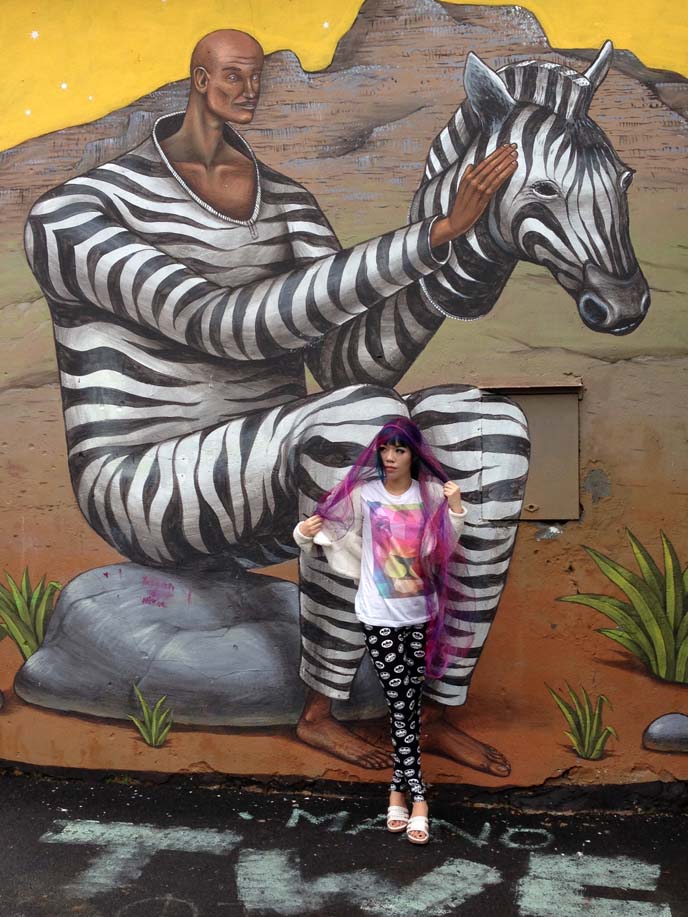
I thought the most successful works were the ones that were vivid, had a connection to Africa, and made you think. Interesni Kazki’s “Zebra Suit” is a great example, and leaves the meaning open to your interpretation.

When Juma told us to look up, we all grinned and did the “Carleton dance.” It’s Will Smith, as the Fresh Prince of Bel Air!

Time to explore Woodstock Exchange or WEX, a modern building that incubates young artists and creative shops. The open space is very Portlandia-hipster, isn’t it?
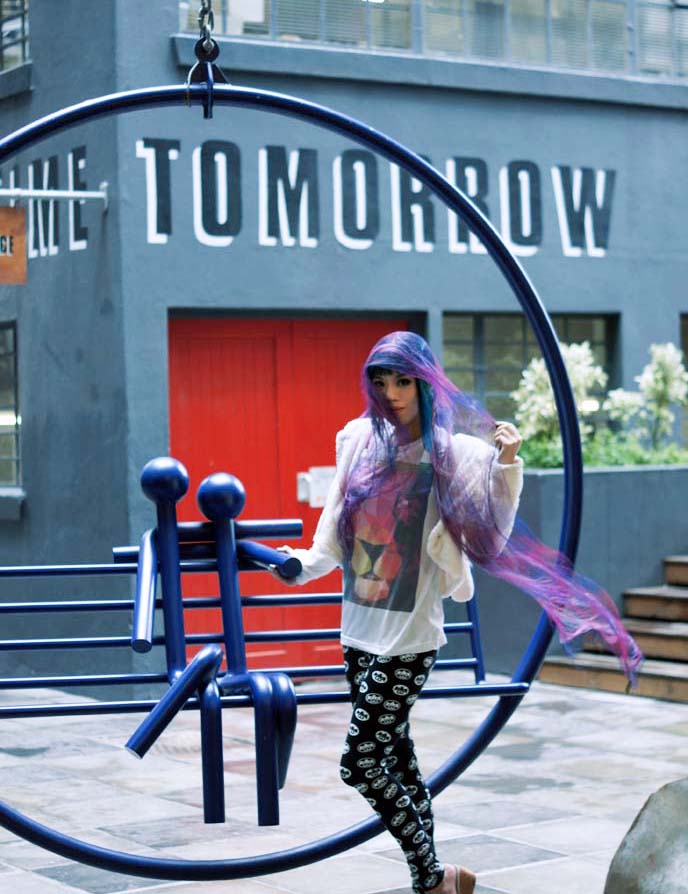
Woodstock Exchange features public installations, like this swing. I’ll later take you inside the creative studios, where artists work and play.

I’m a fan of this sleeping dog statue by Frank van Reenen. Next door, there are multiple design and fashion boutiques, and art galleries.

We had a healthy lunch at Superette. I could eat their veggie sandwiches and protein-salad plates every day; everything is prepared with locally-source seasonal ingredients. For a drink, it’s hard to decide between the fresh lemonade, ginger kombucha, local roast coffee, and craft beers.
On a different day, we ate fresh seafood at Ocean Jewels in WEX. $4 US for a plate of grilled angelfish and sweet potatoes. Once again, I could have this daily!

Leave room for a drink at Lady Bonin’s Tea Parlour, described as a “Purveyor of Magical Infusions and Tasty Curiosi-Teas.” I tried brewed buchu, a South African woody plant that has traditional medicinal properties, and is drunk to help digestion.

Lady Bonin also serves gluten-free and sugar-free snacks. We tried the matcha, and rooibos with mocha.

Isn’t the street art in Woodstock incredible? Gotta love this blue fellow with Bam Bam hair. Thanks Cape Town Tourism and Juma for the inspiring tour.

I leave you with multicolored works by two Spanish artists. Okuda…

… and Remed. Without doubt, South Africa is a Rainbow Nation.
PS: Don’t forget, I will be in the Philippines (Cebu), China (Shanghai) and Hong Kong soon! Let me know your travel suggestions, and follow along my trips in real-time on my social networks (@lacarmina, linked in the right sidebar).
 LA CARMINA
LA CARMINA






